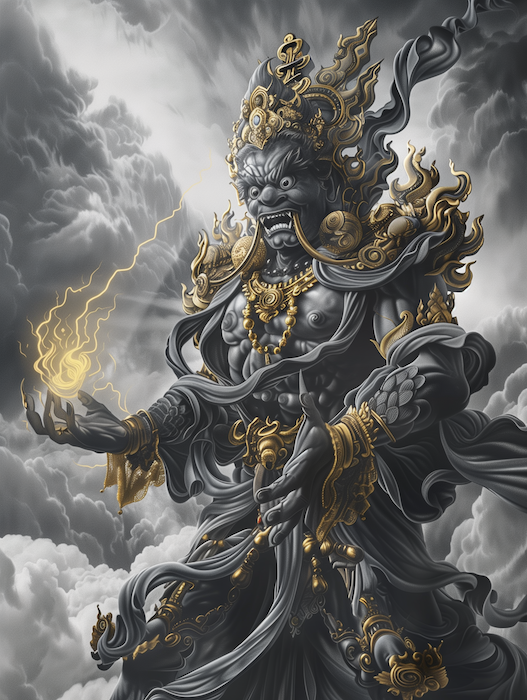Neigong
-
Fagong 发功: Significance and Historical Evidence
Fagong 发功, the skill of emitting qi, is a diverse topic as it actually has quite a long history in China, there are many types of qi emission, and there are various reasons why this skill might be something to pursue. Historical Evidence of Qi Emission Qi emission, or faqi 发气, can be a controversial subject and, for the most part, in China has been taboo to demonstrate or speak of too publicly since well before the internet was around. So although it is something that exists among neigong adepts in China, you won’t find demonstrations or much about it on Chinese internet or social media. Interestingly, records of qi…
-
Bioelectricity and the Modern Understanding of the Body’s Natural “Energetic” Intelligence
Classical Chinese views of health and the human body focus on the flows of qi 气 throughout the body’s meridians and between organ systems. Daoists had various “symbolic visions” of the body which could sometimes exist simultaneously and overlap. For example, one could metaphorically view the body as a microcosmic landscape, or in another, as “an administrative system that parallels the bureaucratic systems of the state and of the heavens.”1 Today, it is common to think of the qi that constitutes and animates the “body universe” as a sort of “energy.” Qi can not be fully reduced to bio-electromagnetism, but I think there is little doubt that the latter accounts…
-
Why Dynamic Sets Are an Important Part of Foundational Training
Summary: Dong Gong 动功 (Dynamic Training Practice Sets, such as Yijinjing 12 Postures, Baduanjin, and other Daoyin) are commonplace in neigong training systems and often focus on developing and clearing/unblocking the 12 ordinary meridians associated with the internal organs. What are the benefits of this mode of practice? With many neigong systems highly focused on building the lower dantian in early stages, people often wonder if focusing on other areas will hold them back. Perhaps the main reason that these types of practices are widely taught early on as a part of initial foundational training is due to the age-old Chinese theoretical approach which says that before you build (qi) ,…
-
Winter Solstice is an Optimal Time for Stillness
“The winter solstice marks the beginning of the return of Yang; a thunderclap shakes the sky” Dongzhi yi yang lai fu shi, pili yisheng zhendong tian. 冬至一阳来复始,霹雳一声震动天。 ~ Zhang Sanfeng’s Meditation Song 三丰打坐歌说 The winter solstice (dong zhi 冬至) marks a special point in the year: The days will start to get longer again, the sun will start to get stronger. Yin Qi has peaked and will now start to decline. Yang Qi will begin to emerge and grow. Neigong and neidan practice are concerned with accumulating Yang Qi in the body. This is considered an excellent time to practice stillness-based practices such as meditation (both specifically on the winter…
-
The Microcosmic Orbit
Below is a brief exploration of the Microcosmic Orbit, also known as the Small Heavenly Orbit. We will touch on its significance, history, key features, as well as different types of Microcosmic orbits and associated practices, and how it is used in different modes of practice (i.e. qigong/neigong vs dandao/neidan). This is not meant to be exhaustive and only briefly touches on some key points with a few instances of specific examples. The video form of this post can be found at the bottom of the page. The Microcosmic Orbit is the flow of Qi around the loop created by the Ren and Du meridians, but what is the significance…
-
A Visit to Dr Zhou Hong
Dr Zhou Hong is a Chinese medicine practitioner from the Huangshan 黄山 (Yellow Mountain) region of Anhui, China who is trained in Classical Chinese Medicine and is capable of some of the extraordinary skills often found among high-level neigong practitioners. Although, he is not as well-known in the west among the circles of neigong enthusiasts who tend to seek out these sorts of masters. I paid him a visit in Huangshan City to experience his unique style of treatment. Continue reading (members only)…
-
“Dian Qigong” 电气功 and a Visit to Master Luo Kangqi
When I first visited Master Jiang Feng’s hospital in Anhui in 2014 and felt and witnessed their electric-like qi emission, I was both surprised at how strong it was and how, well, “electric” it was. I asked him, “What would you say is the main difference between this electric qi and the electricity produced by a machine?” He responded simply, “the energy of a machine is dead, qi has life.” A response that perhaps creates more questions than it answers! Below, I will share some thoughts on the relationship between electric/electromagnetic phenomena and “electric qi” phenomena. Although this topic is way too vast for a single post, I will summarize…
-
Qi-charged Tea and Emitting Qi into Substances
A specialty of the style of classical Chinese medicine passed down within the Gengmenpai lineage is their use of special pills (dan 丹) that have gone through a special process in which an adept practitioner emits their own qi and injects it into the medicine to greatly enhance the medicinal effect. I have no doubt that it was this extra touch given to the medicine that caused me to have the experience that I did the first time I took several of their signature huaxuedan (化血丹) at once years ago. What is interesting, is that it was explained (and in some cases demo’d) to us how qi can be emitted…
-
Vajrapani: the Protector of Shaolin
Vajrapani is a deity with special significance for Shaolin Temple who is rich with symbolism. Could he also represent the skill of electric-like qi emission? As discussed below, this idea may not be too much of a stretch. Vajrapani is the patron Bodhisattva and protector deity of Shaolin Temple. In Chinese he is called Jingang Shou Pusa (金刚手菩萨), literally, “holder of the vajra.” The vajra is both a symbolic ritual object and a weapon, and could be translated from Sanskrit as either “thunderbolt” or “diamond.” Vajrapani is a deity that is not only seen as a protector and source of strength, but also represents some of the most interesting juxtapositions…
-
Fagong Practice: Assisted Faqi, Practice Moving Non-living Materials
The skill of electric-like qi emission (fagong 发功) is not something you encounter every day. It is a level of skill that typically takes years to attain and is often aided by various “boosts” and adjustments from a master as the student gradually develops. Practicing fagong “with assistance” is sort of like a way for a student to begin to practice this skill with “training wheels,” so that they can start to develop the necessary control and mind-body coordination needed for this never-before-used function of their body. In light of the above, the majority of western students who are practicing this skill (as taught, for example, within the Gengmenpai and…









